'Hollywood technology' helping military rehabilitation
- Published
Flight Lieutenant Nathan Jones uses CGI tech to help him recover.
"There is no hiding, you are watching exactly what is wrong with you."
Flt Lt Nathan Jones is watching each of his leg muscles moving, on a big screen at the Defence Medical Rehabilitation Centre (DMRC), near Loughborough.
Since injuring his back on a flight to Afghanistan five years ago, he has had three operations to repair nerve damage and has only just started to walk without a stick again.
"For me to see what I'm doing is amazing," he says.
"It shows which muscles are firing.
"I'm amazed at how badly I was walking.
"It feels brutal but it takes something like this to pinpoint where I'm going wrong.
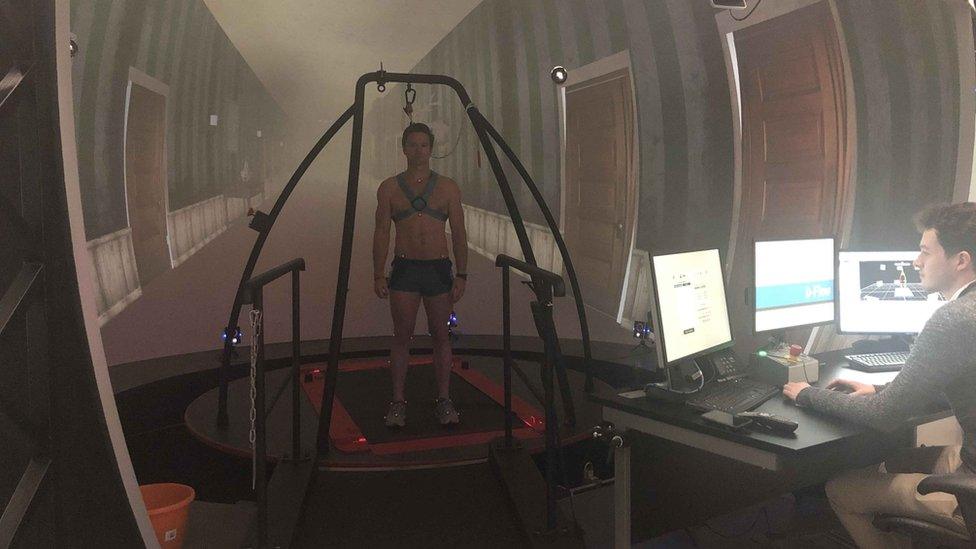
Patients have sensors attached to their body
"In three months time, I will be able to see how I've improved."
The Computer Assisted Rehabilitation Environment (Caren) machine is, put simply, is a big treadmill inside a mini-planetarium, surrounded by cameras.
The machine uses virtual reality technology to help a patient's balance, cognition and confidence in walking
It is a bit like a flight simulator but the team at the DMRC call it a "functional rehabilitation simulator".
Once strapped in, the patient is surrounded by screens that can recreate any environment the medical staff want.
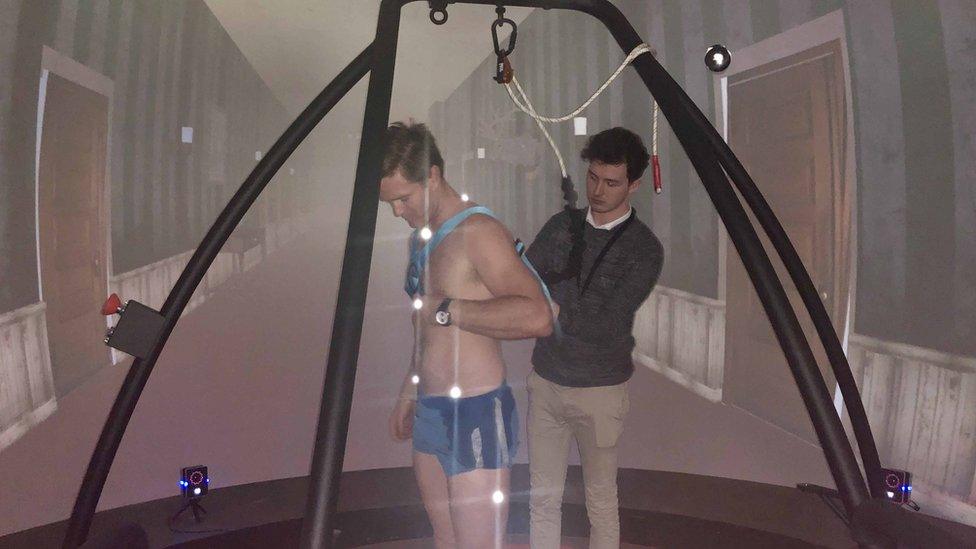
There are only six Caren machines in the world
So if they want to recreate walking up a cobbled street, it can happen. If they want to recreate a supermarket, they can.
In the US, these machines aren't used for rehabilitation, they are used to prepare military personnel for deployment. A US marine can patrol a valley in Afghanistan without leaving their barracks.
DMRC clinical research manager Russ Coppack says: "It is a fully immersive environment.
"It allows us to place the patients in a real-world environment."
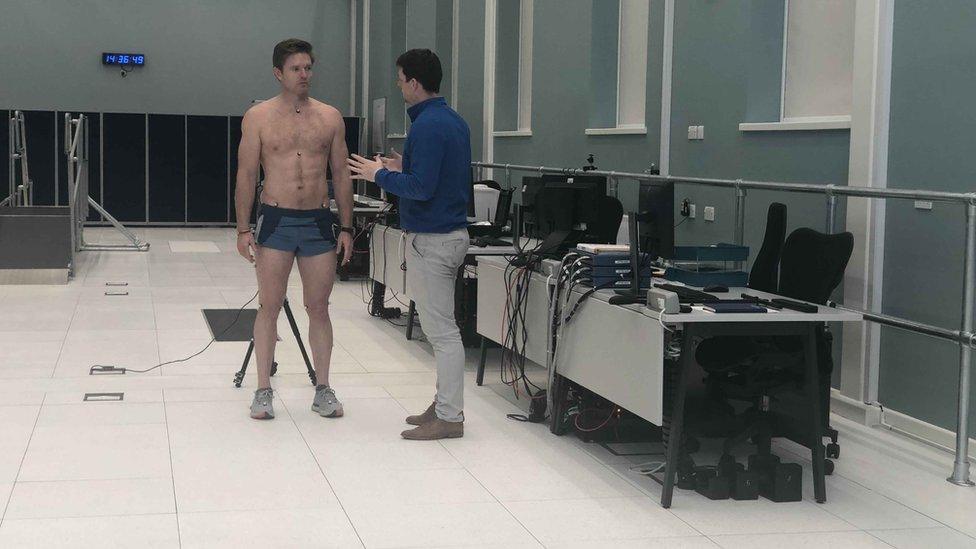
CGI helps medical staff assess which muscles the patient is using
Next to the Caren machine, the 30m (100ft) biomechanic performance lab houses 32 3D motion-capture cameras and 10 high definition video cameras.
Equipment within the floor monitors muscle activity.
It's the same technology used by Hollywood producers to make films such as Lord of the Rings and Planet of the Apes.
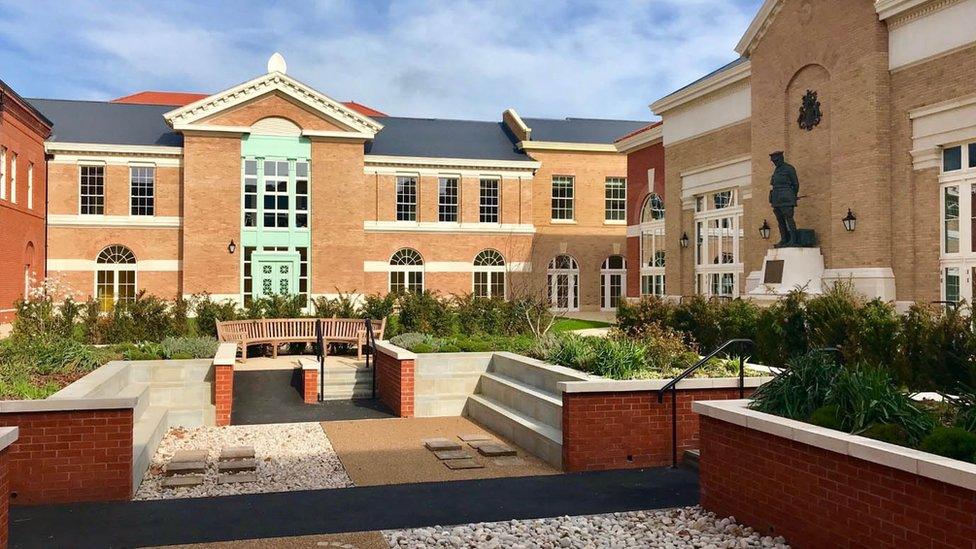
Stanford Hall includes five bespoke gyms, a 25m swimming pool and sports facilities
And because the patient's body is covered in sensors, it allows the medical team to see which muscles are being used and whether more weight is being placed on one foot or the other.
Flt Lt Jones is using the equipment to improve his movement.
"It shows exactly the position of your body," he says.
"It's very hard to give yourself self-feedback, because you can't see.
"Using apparatus like this, you get a full visual on it.
"It takes something like that to actually highlight and emphasise what your failings are."
- Published14 April 2016
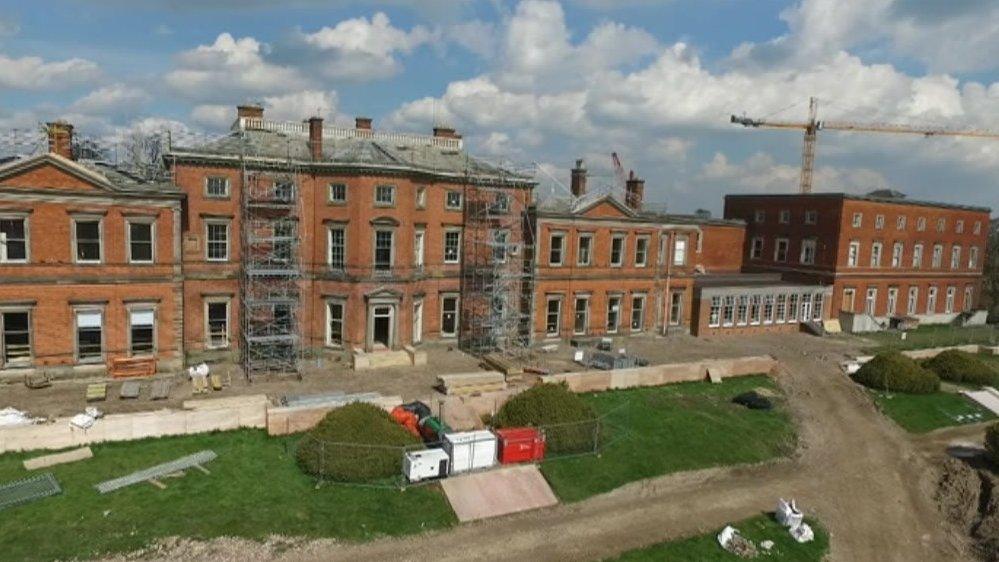
- Published10 July 2014
